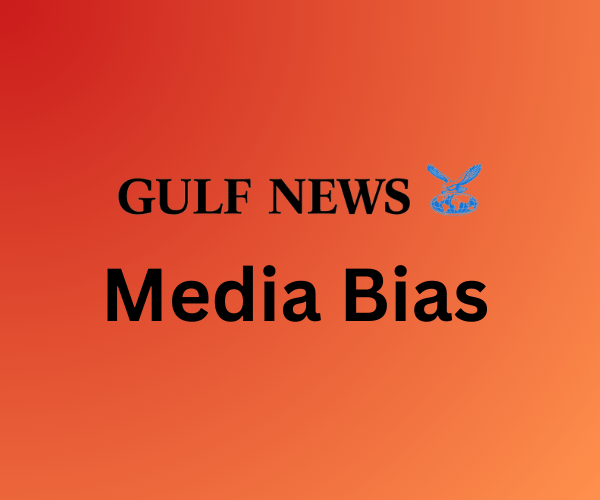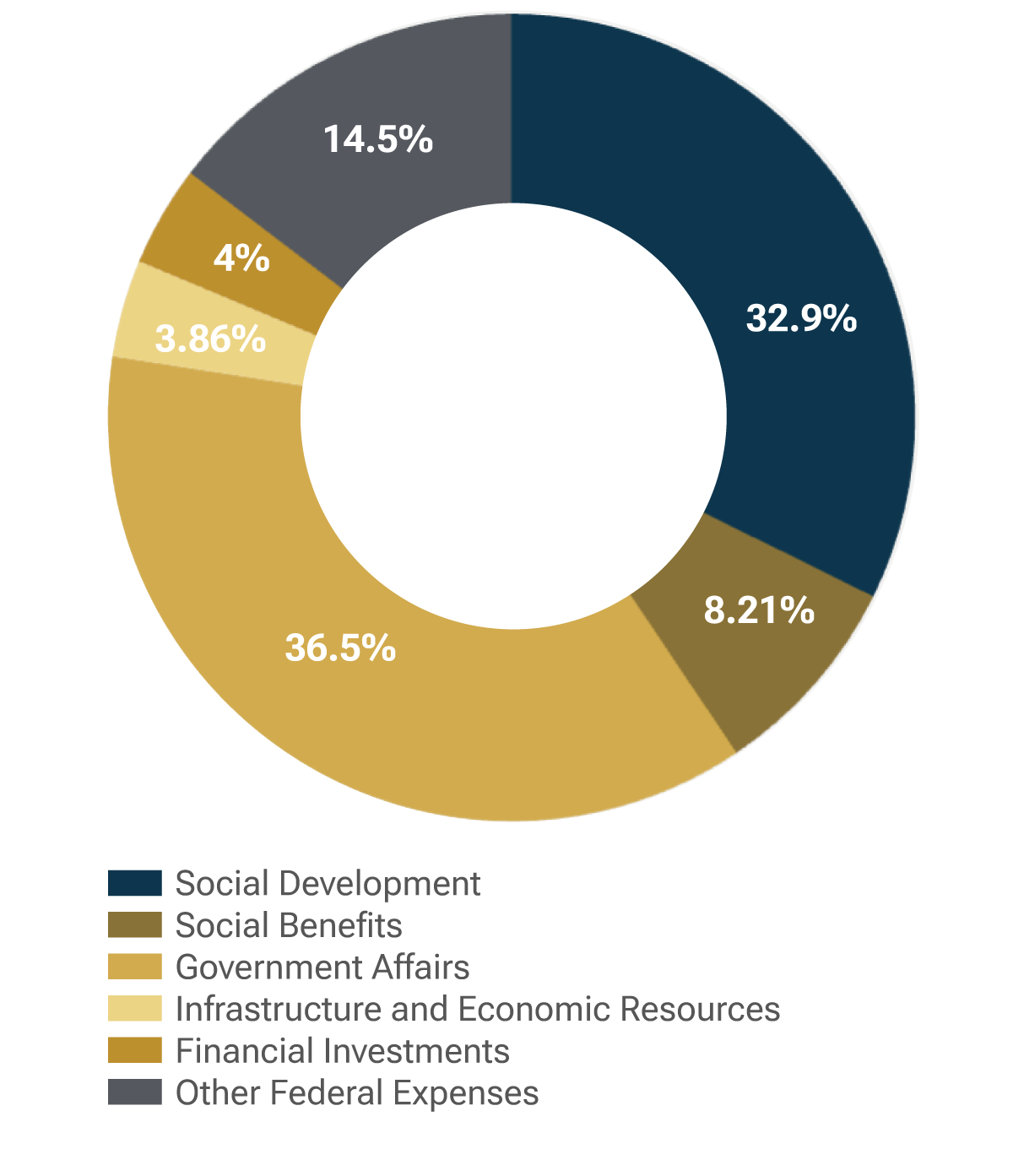
Ever since its inception in 1978, Gulf News has steadily increased its global presence. Although currently physically distributed only in the United Arab Emirates (UAE) and other Persian Gulf Countries, the launch of its online edition in 1996 has allowed this daily newspaper to cross transnational boundaries.
As one of the leading forces in English-language newspapers in the Middle East and North Africa (MENA) region as well as in the UAE according to Forbes, and one which has been the recipient of numerous awards throughout its time, Gulf News maintains a reputation that will make assessing its bias a challenging yet critical task.
In this article, we will analyze the newspaper’s coverage and editorial decisions to determine if there is a discernible political bias in their reporting. Through our analysis, we hope to provide a comprehensive answer to whether Gulf News is biased and shed light on the factors that contribute to media bias in general.
How Does Biasly Rate News Sources?
Biasly’s algorithms produce bias ratings to help provide multiple perspectives on given articles. Biasly has analyzed 200,000+ news articles from more than 3,200 news sources through our A.I. technology and team of political analysts to find the most factual, unbiased news stories.
Biasly determines the degree of political bias in news sources by using Biasly’s Bias Meter Rating, in which Biasly’s team analyzes media sources’ reliability and bias and produces three scores, a Reliability Score that measures the accuracy of media sources; an A.I. Bias Score, evaluated by A.I.; and an Analyst Bias Score evaluated by political analysts. These scores are rated based on seven rating metrics including Tone, Tendency, Diction, Author Check, Selection/Omission, Expediency Bias, and Accuracy. These metrics help our analysts to determine the political attitude of the article.
Our A.I. machine-learning system employs natural language processing and entity-specific sentiment analysis to examine individual articles and determine their bias levels. By analyzing the key terms in an article such as policies, bias phrases, political terminologies, politicians, and their nicknames, the algorithms can rate the attitude of the text. Bias scores range from -100% and 100%, with higher negative scores being more liberal and higher positive scores being more conservative, and 0% being neutral.
Is Gulf News Politically Biased?
Biasly’s rating for Gulf News gives the paper a Computer AI Bias Score of Center, a score generated by its AI-based algorithms. Biasly’s AI bias analysis focuses on the leaning of tone, opinion, diction of the author, and their respective tendencies. For example, Biasly’s AI rated its non-renewable energy policies as Center with sentiments that support the issue from a central viewpoint. It also found that liberal politicians such as Anthony Blinken and others were covered in a negative light.
Biasly has not yet assigned an Analyst Bias Score. Typically, alongside the Computer Bias Score, Biasly presents an Analyst Bias Score. This score is curated based on a review of at least 15 articles by a team of analysts representing liberal, moderate, and conservative viewpoints. Different types of bias in articles, preferences for liberal or conservative politicians and policies, all factor into generating these scores. The more articles the Biasly analyst team reviews and rates, the more precise the analyst score becomes. We anticipate delivering a precise score for this metric in the near future.
Gulf News has faced prior criticism by liberals, independents, and conservatives alike for controversies including articles published under false pretenses and conspiracy theories being spread via their site.
The first controversy arose when, in 2009, a column was run that claimed the Holocaust was a lie. An excerpt from the piece follows as such:
“Today, the whole world stands as a witness to the fact that the Nazi holocaust was a mere lie, which was devised by the Zionists to blackmail humanity. The same Zionist entity swindled the world out of billions of dollars over the years to compensate the wrong and unjust which they claim to have been inflicted on their people. It is evident that the holocaust was a conspiracy hatched by the Zionists and Nazis, and many innocent people gave their lives as a result of this inhuman plot.”
Some years later, in 2013, Gulf News again found themselves to be recipients of opprobrium, this time specifically by those from, or with close relation to, Pakistan. In its editorial, it claimed without providing a source that Pakistan and Afghanistan did not vote for Dubai in its bid for Expo 2020. Pakistani officials and representatives were quick to brush aside the allegations as baseless, prompting bipartisan backlash accusing Gulf News of attempting to defame and damage relations between Pakistan and the UAE.
Given limited data to this point concerning where frequent readers of Gulf News stand politically, it is somewhat difficult to truthfully and holistically determine the side of the aisle that the authors attempt to appease to. This may be due to the fact that Gulf News is a newer source, relatively speaking, and thus vetted sources such as Pew or Gallup have not yet procured such data. Nevertheless, grasping a comprehension of their demographic’s political views, generally speaking, may slightly resolve this discrepancy. The following chart details the federal budget for the fiscal year of 2022, which often is a direct representation of the voting and lobbying interest of citizens. Although not all of these ideals can be directly translated/related to those of similar nature in the U.S., it is reasonable to claim that issues such as social development are closer aligned with liberal views in the United States, while financial investments and government affairs carry more weight with conservatives. Given these considerations, we can determine that the primary viewership of Gulf News is liberal-leaning, or at least the equivalent of such in the UAE.

Source: UAE Ministry of Finance
Readers like you are more likely to have a strong opinion of Gulf News based on your political leaning because of their tendency to favor nonaligned causes and people as represented by Biasly’s “Central” rating. In the remainder of this article, we’ll talk about ways to identify any bias so you can separate the opinions from the facts and become a more informed consumer of news.
Before we begin, we need to discuss bias. Bias is a natural function of humans, and we can express it both consciously and unconsciously. Bias is one of the most fundamental forms of pattern recognition in humans. This isn’t to lower the bar and say that “all things are biased,” but to explain the process in which we may come to trust certain news organizations that display patterns of coverage.
On the media’s part, there is an incentive to retain audiences, encourage them to purchase subscriptions, and rate products positively. Bias is a two-way street, people want to see news stories about things they care about, and the media needs viewers to continue their operations. This creates a positive feedback loop that influences what stories are covered and from what perspective. This also explains the actions of more liberal news organizations.
Analysis of Bias in Gulf News Online Articles
Northwestern University in Qatar has determined some critical statistics regarding the typical viewership of news in the Middle East, which obviously constitutes Gulf News as well. Metrics include how readers consume their news (television, smartphone, etc.), how it is consumed on social media, and more. Considering that a vast majority of respondents use television or smartphones for consumption, and prefer WhatsApp or Facebook as their platform of choice, most of the news consumption in the region is likely coming from a middle-aged to young adult demographic range. Given these facts, is Gulf News really biased? We’ll look at some of their articles in more detail below to identify the signs.
When determining bias, some of the most common metrics used include Tone, Tendency, Author, Diction, and Expediency Bias, which are the primary metrics we’ll focus on below.
- Tone: This represents the attitude of the writing, formed distinctively but related to the author’s word choices or diction.
- Diction: The specific words chosen by the writer.
- Author: A metric related to the article’s author, taking into account their history of stance on issues based on past articles and social media posts.
- Tendency measures how consistently an author shows bias in their work, including factors like their tone and perspective.
- Expediency Bias relates to the immediate impression created by elements like the article’s headline, images, or summary, indicating if they favor a particular viewpoint.

Source: Gulf News
For example, the photograph in this article shows passengers embarking on their respective journeys throughout the Rafik Hariri International Airport after fighting between Hezbollah and Israel prompted many flight alterations. The nature of this article and its accompanying thumbnail/opening photograph highlights quite well the non-partisan nature of typical Gulf News reporting. Given the circumstances of the causal situation, which are heightened tensions and flares of violence between Lebanese-based groups and Israel amidst the ongoing Israel-Hamas war, a biased news source may have chosen a picture that conveys a completely different message. One showing the damage caused in Golan Heights after the attack may draw sympathy in favor of Israel, while another portraying prior damages to Lebanese structures or Hezbollah militants as courageous fighters may likewise draw sympathy for the contrary. Nevertheless, a neutral photograph such as the one pictured chooses to focus on the strictly factual side of the matter, involving flight delays and cancellations as a result of country-wide precautions.
Moving forward, the first article we’ll examine is entitled “Tesla sues ex-supplier Matthews over EV battery trade secrets.” Biasly has rated this article as “Center.” Part of the reason for this rating is that, as the author attempts to maintain neutrality, the tone they utilize suggests that they have no opinion on whether or not Matthews should be deemed legally liable for information theft.
The lack of emotionally loaded evidence is immediately evident, and objective facts-of-the-matter are presented so as to avoid influencing the opinions of readers:
“The lawsuit, filed on Friday in US District Court for the Northern District of California, said Matthews owes damages that Tesla “conservatively estimates will exceed $1 billion” for misusing company trade secrets related to dry electrode battery manufacturing technology.”
“The lawsuit said Matthews shared Tesla’s innovations with unnamed competitors by selling “machines and other technologies embodying Tesla’s trade secrets.” It also said Matthews claimed Tesla’s inventions as its own in patent filings that have revealed confidential Tesla information.”
Another article, “Why wildfires and heatwaves are unravelling the world,” received a score of “Somewhat Liberal” by Biasly. Part of the reason for this rating is that, even though the author tries to maintain neutrality, the tone and consistency of the article suggests that she wants to see large-scale government overhaul aimed at addressing climate change.
Although the diction of the article is nowhere near extreme, it clearly accepts the merits of scientific-based findings and research put forth to confirm the hypotheses surrounding global warming. For example, the author uses the word “exacerbate” to offer support for her expectation that rising temperatures will spread more vector-borne diseases.
Throughout the article, author Rachel Williams carefully omits resistance to these beliefs and possible refutations to climate discrepancies put forth by those on the other side of the aisle, a view typically held by Republicans. Williams goes on to point the finger at human activities, noting their responsibility for a significant increase in the likelihood of heatwaves. Although this is another commonly held belief, there still exist many opposition voices who claim either such a drastic shift in temperature is being exaggerated and falsified, or that human activities are not to blame so much as are natural causes.
The author includes her sentiments towards policy shifts and government action towards the conclusion of the article:
“Moreover, the current situation underscores the importance of addressing climate change at a policy level. Governments must prioritise climate action in their agendas, ensuring that both mitigation and adaptation measures are incorporated into national and international strategies.”
Again, although for many the prospect of climate change is one of a grim reality and a scientific truth, a plethora of others deny these grounds and cite contrary evidence, creating a heated debate that maintains a stronghold on American politics today. Hence the importance of searching for selection and omission, alongside emotionally loaded language and tone tendencies, when reading an article. Despite what you may find to be common sense as a reader, authors and media sources may be confirming your beliefs for you.
Even though this article falls on the left end of the spectrum, article bias can differ between articles and authors, even when they come from the same organization. This shows the importance of looking for the signs of bias — including (but not limited to) tone, tendency, diction, author, and expediency bias — in any article you come across.
To demonstrate, here’s one more article that demonstrates little to no bias throughout and also comes from Gulf News: “Two arrested for selling nearly 800,000 e-cigarettes without licence in the UAE.” Biasly’s A.I. rating is “Center,” as the language throughout is very cut-and-dry, objectively stating the facts of the matter and avoiding emotionally loaded language that influences the reader’s opinion:
“The Ajman Police General Command has arrested two Asian nationals accused of selling and storing 797,555 electronic cigarettes without a licence, besides committing tax evasion.”
“Upon searching, 797,555 electronic cigarettes were found stored in five rooms of the villa.”
The only trace of bias in this article is the author’s inclusion of the Police Colonel’s – who was leading the investigation – comments on the ‘expertise’ and ‘efficiency’ of his counterparts, but this does not seem to affect the article much if at all.
Analysis of Gulf News Opinion Articles
Before we answer this question, we need to draw the distinction between opinion and reporting. While reporting is intended to be neutral, giving the reader the facts and quotes from primary sources to let them form their own opinion, opinions are an outlet for columnists to express their personal views on the issues of the day. While we saw elements of factual reporting in the analysis above, the Gulf News opinion pieces don’t seek objectivity but prioritize putting forth an opinion instead.
Consider the opinion article “Netanyahu’s Congressional address: A catalogue of deception.” The title is loaded with bias because it contains language suggestive of a negative opinion or judgment about Netanyahu’s speech. Specifically, the word “martyrdom” implies that Trump is a victim or a hero, but in this context, it is used sarcastically to influence the reader’s opinion before they read the article. The preemptive criticism of the former president and the bias present in the title suggests that the author does not intend to provide a fair and objective reporting of the facts.
However, the article “The Texas Voting Bill, Explained” has a more objective title, focusing on informing the reader rather than pushing an agenda. Reliable articles are marked by neutral language and facts from credible sources. Based on the title alone, it could be safely assumed that this article would be less biased than the one previous.
These articles, in addition to those above, are only a small representation of all of the NY Times content, but they indicate that the outlet is often characterized by a great deal of opinion — further underscoring the importance of knowing how to distinguish subjective writing from genuine reporting.
Who Owns Gulf News?
Gulf News is not traded publicly, and is owned by Al Nisr Publishing, a subsidiary of the Al Tayer Group. This group is a family-owned conglomerate based in Dubai, UAE, and was established in 1979. The group operates across various sectors, including automotive, real estate, retail, and ventures. The relationship they hold as owner of Al Nisr allows them to maintain a significant presence in the media industry of the UAE. Al Tayer Group is owned by the Al Tayer Family, chaired by Obaid Humaid Al Tayer. He is a prominent Emirati businessman and politician who has served as UAE’s Minister of State for Financial Affairs. However, given the non-partisan nature of most government official roles in the country, his political affiliation is not documented and therefore likely has no impact on the publication of Gulf News, assisting it in maintaining its central stance.

Source: Wikipedia
How to Evaluate and Uncover Bias
It can often be difficult to tell if the news you watch is biased. If you have settled on a news channel, it’s usually because you trust the information you are gaining. Unfortunately, many trust the information they are hearing because it confirms what they already believe. This is referred to as “confirmation bias.” It is important to challenge your beliefs and get third-party verification that what you are hearing is the full story. This is why we recommend using Biasly to compare different news stories side-by-side using our bias ratings to figure out what both sides think of a political issue.
Even though Biasly gave Gulf News a Center bias score, remember that bias varies by article, and Gulf News does not exclusively publish central thought pieces. In fact, it is known to have produced some leftist and conservative-leaning articles before. Additionally, some article types will inherently have more or less bias; general news articles are known for being less biased than opinion pieces. And while every article you read will be biased to some degree, some stick to the facts better than others, which is why it’s so important to use Biasly’s News Check to help you determine the bias of what you read.


























